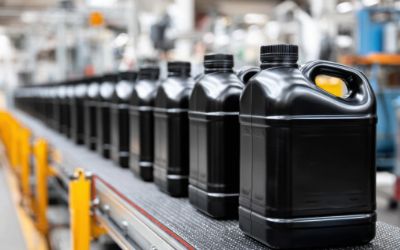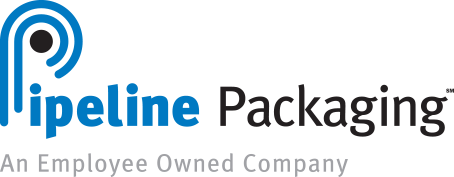Compliance is a top priority for many customers, especially those dealing with highly sensitive products. Packaging systems that fail to comply with the standards of the day could face hefty fines, increased scrutiny, or legal proceedings and have lasting environmental or consumer impacts. Yet, meeting packaging regulations and avoiding these negative scenarios can be a challenge. With more than one set of regulatory criteria (depending on the industry) and endless packaging combinations, access to expert advice is critical.
We provide a thorough survey of today’s most common packaging regulations and share how Pipeline Packaging lends its industry knowledge to provide compliant, comprehensive solutions.
The Most Common Packaging Regulations At a Glance

Various oversight agencies, each providing its own conditions and requirements for every substance and every industry, can cause some of the greatest compliance challenges. For operations, it can be laborious to sift through these complex statutes on top of sourcing the packaging that aligns with budgetary needs — all while avoiding costly violations.
The two most common regulatory concerns our customers face are prohibited chemical substances and storage and transportation of hazardous materials.
Prohibited chemical substances are regulated by a number of different agencies and countries. Each regulation is a separate list of chemical substances that have been found to be detrimental to human health. In these cases, exposure could cause cancer, birth defects, or other health hazards. Most, if not all, of our customers want assurance that none of the substances on any of these lists is present in their containers.
In the US, one such regulation is California Prop 65, a state law that requires businesses to warn consumers if their products contain any of the 900+ chemicals that, if present over a certain threshold, must be signaled to consumers through a warning label.
Though only a state law, businesses operating at any level within the state must comply. Noncompliance with packaging regulations could result in fines up to $2,500 per violation per day as well as private lawsuits from concerned consumers.
At the international level, measures such as the European Union (EU)’s Registration, Evaluation, Authorization, and Restriction of Chemicals (REACH) program govern any substance created, used, or marketed within the EU. Prior to importing within the EU, manufacturers must follow packaging regulations by registering products with the European Chemicals Agency (ECHA). During this process, the ECHA has the right to allow, restrict, or even ban products.
This international compliance is particularly intricate for those dealing with Substances of Very High Concern (SVHCs). Some of the most common solutions in this category include heavy metals, preservatives, adhesives, resins, and many others. In these cases, manufacturers must inform recipients and consumers as well as notify the ECHA if the SVHCs presence is above 0.1%. Once in the database, ECHA will continue to review SVHCs twice a year as part of its packaging regulations.
Failure to comply with this process and its standards can prevent manufacturers from expanding into the European economies as well as trigger additional fines.
Working through Packaging Regulations with Pipeline
Pipeline Packaging offers customers the perfect comprehensive packaging solution. Maintaining that commitment means going beyond the traditional definition of a packaging distributor. Aside from wielding a network of more than 400 global suppliers and manufacturers, we know it takes a complete suite of value-added services as well as industry expertise on topics like packaging regulations.
While some regulations do not change very often, others are updated frequently. Our team of experts is well versed in ensuring our customers' existing and new packaging systems meet the standards of their individual markets.
Packaging engineer Jim Frank brings more than three decades of experience to the Pipeline Packaging team. He explained the process behind helping customers check if their hazardous material packaging is compliant using an example from the Department of Transportation (DOT).
Transporting hazardous materials requires strict compliance with safety regulations to protect people, property, and the environment. One of the key components of these regulations is UN-rated packaging, a global standard that ensures containers used to ship dangerous goods can withstand the rigors of transport. In the United States, the Department of Transportation (DOT) plays a central role in adopting, enforcing, and interpreting these UN packaging requirements.
UN-rated packaging — sometimes called UN-certified packaging — is packaging that meets the testing and performance standards established by the United Nations Recommendations on the Transport of Dangerous Goods. These standards are designed to ensure that containers used for hazardous materials can safely contain their contents during handling, shipping, and emergencies such as drops, punctures, or exposure to extreme temperatures.
Using UN-rated packaging isn’t just about regulatory compliance — it’s about safety and liability. Improper or uncertified containers can lead to leaks, fires, environmental contamination, or severe penalties. Shippers who fail to comply with DOT regulations may face:
- Civil penalties up to $100,000 per violation
- Criminal penalties for willful violations
- Rejected shipments by carriers or customs authorities
Moreover, compliant packaging demonstrates a company’s commitment to safety and environmental responsibility, protecting both brand reputation and operational continuity.
“While UN packaging regulations are consistent year over year, most packaging systems and containers are still required to be re-certified on an annual basis,” said Frank. “A packaging system or container must undergo a battery of standardized tests, including a drop test on all sides and corners, a pressure test to prevent leaks, and stack tests for stability.”
Aside from physical tests, customers are also responsible for utilizing containers certified to the proper Packaging Groups (or PG). The three PGs are I (high-hazard), II (medium-hazard), and III (low-hazard), also referred to as X, Y, and Z.
“You never want to place a PG I substance in PG II or III packaging,” he said. “Not only is it noncompliant with packaging regulations, but it also puts surrounding people and the environment at risk. As a packaging engineer, I assist customers in designing or recommending solutions that check all of these boxes.”
Frank noted that incompatible packaging doesn’t always equate to regulatory infringements.
“While there’s no violation for storing a PG III chemical in a PG I packaging system or container, it can be more robust and expensive than necessary,” he said. “From there, we would recommend a system that aligns with the customer’s hazard level. Some customers will continue using a higher-rated solution if they have other PG I products to streamline their orders or to cover all their bases.”
However, building a solution that follows today’s packaging regulations requires more than a look at its hazard level. According to Frank, the key lies in the Safety Data Sheet (SDS).
“The SDS provides not only the Packaging Group but also the Specific Gravity (material density) and other information about the substance being packaged that I need to know as a packaging engineer to determine the correct UN Rating for that substance, whether it be a liquid or solid,” he said. “Melding this information with our expertise, we source exactly what the customer needs.”
Collaborate with Good People at the Core
Meeting packaging regulations takes complete collaboration. Armed with keen awareness of the makeup of a substance along with standing provisions, Pipeline experts like Frank help customers fulfill their obligations so they can avoid the consequences of noncompliance.
“We always ensure every customer question is fully acknowledged,” said Frank. “As the experts, our response should always instill confidence in Pipeline’s ability to find a solution. We never want customers to feel concerned about a system’s performance or whether it will violate packaging regulations.”
Every member of the Pipeline Packaging team takes personal responsibility for helping customers achieve success. That guiding principle is what powers our mentality of Good People at the Core for comprehensive packaging services that cover all bases, especially packaging regulations.
“Pipeline is there to provide information and education to customers,” said Frank. “Even if someone is new to the industry, we make it our personal mission to guide them toward success. Just as our customers are looking for the perfect packaging partner, we’re equally looking to keep them safe and satisfied.”
Packaging regulations are complex, but an experienced packaging partner can make all the difference. Contact us today to discover how Good People at the Core can deliver compliant, comprehensive solutions for your operation.


